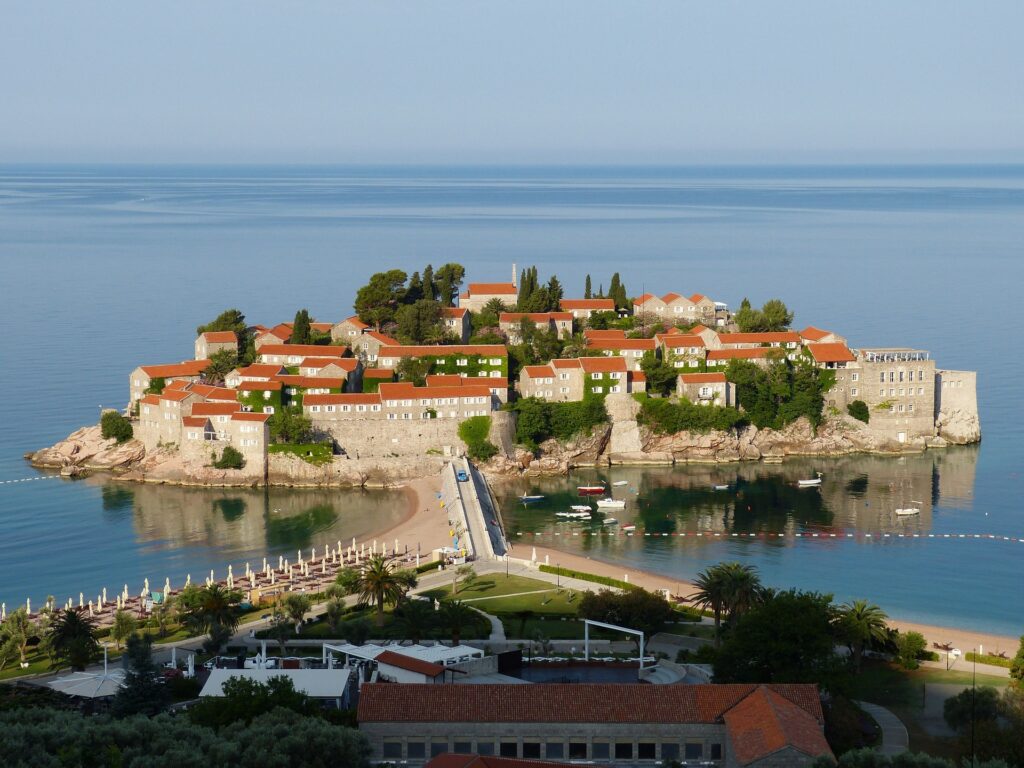Nestled along the picturesque Adriatic coast, Montenegro is a country that exudes natural beauty, rich history, and a relaxed Mediterranean charm. With its stunning coastline, dramatic mountains, and charming old towns, Montenegro is a destination that captures the hearts of travelers seeking both relaxation and adventure. In this article, we provide a basic guide to Montenegro, offering essential information to help you discover the allure of this Adriatic gem.

Geography and Landscape
Montenegro’s diverse landscape ranges from the sparkling blue waters of the Adriatic Sea to the majestic peaks of the Dinaric Alps. The Bay of Kotor, often referred to as Europe’s southernmost fjord, is a UNESCO-listed natural wonder with medieval towns nestled along its shores.
Coastal Splendors
Montenegro’s coastline is dotted with pristine beaches, charming fishing villages, and elegant seaside towns. The coastal towns of Budva and Kotor are renowned for their historical significance and stunning architecture, making them must-visit destinations for culture and beach enthusiasts alike.
Bay of Kotor: A Microcosm of Beauty
The Bay of Kotor is a tapestry of cultural influences, with Venetian, Ottoman, and Austro-Hungarian legacies shaping its unique character. Explore the bay’s charming towns, such as Perast and Herceg Novi, and take in panoramic views from the fortress walls of Kotor.
Adventure and Nature
For outdoor enthusiasts, Montenegro offers a wealth of opportunities. The Durmitor National Park features dramatic landscapes, including the Tara River Canyon, one of the deepest canyons in the world. Hiking, rafting, and even skiing in winter are popular activities here.
Historical Treasures
Montenegro’s history is etched in its architecture and cultural heritage. The ancient town of Cetinje, once the royal capital, showcases historical buildings and museums that offer insight into the country’s past. The Ostrog Monastery, perched dramatically on a cliff, is a spiritual and architectural marvel.
Local Cuisine and Culture
Montenegrin cuisine is a fusion of Mediterranean flavors and Balkan influences. Savor seafood specialties, hearty stews, and delectable pastries while enjoying the warm hospitality of locals.
Language and Etiquette
The official language is Montenegrin, and English is widely spoken in tourist areas. Greetings are typically accompanied by a handshake and direct eye contact. When visiting churches or religious sites, dressing modestly is appreciated.
Practical Information
- Currency: Euro (EUR)
- Time Zone: Central European Time (CET, UTC+1)
Conclusion
Montenegro’s blend of natural beauty, historical riches, and Mediterranean allure make it a destination that captivates every traveler. From relaxing on sun-kissed beaches to exploring medieval towns and embarking on outdoor adventures, Montenegro offers a diverse range of experiences. Embrace the charm, history, and splendor of this Adriatic gem, and you’ll leave with cherished memories of a land that seamlessly weaves together past and present, nature and culture.